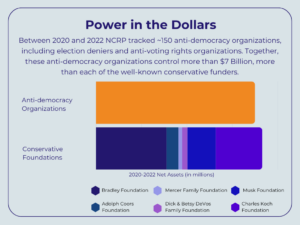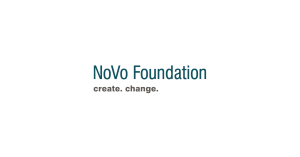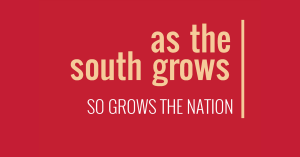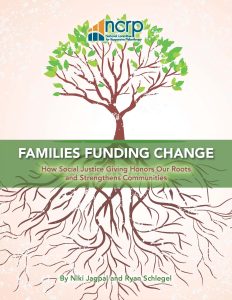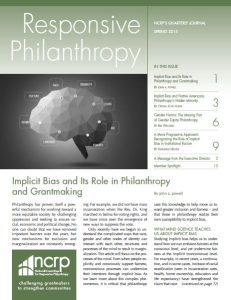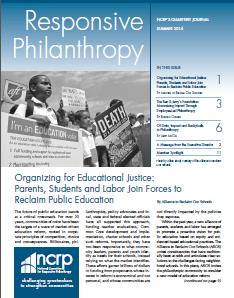“Coming together is a beginning, staying together is progress and working together is success.”
-Henry Ford
If grantmakers want to ensure their grantees’ success, and their own, they cannot neglect the importance of ongoing relationships. Unfortunately, the wider the power gap in a professional relationship, such as that between foundations and nonprofits, the more difficult it can be to sustain trust, respect, honesty and other qualities needed to support long-term partnerships. But this challenge doesn’t have to become a permanent point of division; there are important ways in which foundations and grantees can be better partners and advance their mutual success.
Last year, the Center for Effective Philanthropy (CEP) released Working Well With Grantees: A Guide for Foundation Program Staff. The report notes how program officers are the main points of contact for most grantees, and the relationships they build are key to the effectiveness of both the foundation and the grantees (the subject of my recent blog post about “foundation middlemen”). Several grantees surveyed by CEP shared how having negative interactions with a funder can lead to harmful effects, such as the foundation’s poor reputation in the community it serves, a general lack of trust for the foundation, a tendency for grantees to be less forthcoming with the foundation and the stifled success of the foundation’s projects.
In “The Power of ‘We’: A Journey Through Collaboration,” published in the summer 2011 issue of Responsive Philanthropy, Chicago Arts Education Collaborative (CAEC) board member Frank Baiocchi offers an alternative way for foundations and grantees to relate to one another. CAEC, a collection of funders supporting arts education in Chicago Public Schools, saw the impact of their work grow exponentially when they launched the Chicago Arts Learning Initiative. Going beyond their own network of funders, they intentionally leveraged the power of relationships by bringing together community organizations, funding organizations, government agencies and individual community members at all stages of the process to develop and implement a plan for equitable and sustainable arts education in Chicago.
In “Foundation-Nonprofit Partnerships: Fact or Fiction?” in the same issue, Blue Avocado editor Jan Masaoka notes the complexity of relationships between foundations and grantees, which, for a myriad of reasons, lack honesty and an acknowledgment of the business financial relationship between program officers and grantees. Like the CEP report, Jan’s article argues that, by having more transparent relationships, foundations and grantees can be more effective.
The argument for greater transparency is a cornerstone of Philamplify, NCRP’s initiative to improve the impact of grantmakers through open dialogue and discussions. Our own research has consistently shown that grantees and other philanthropy stakeholders crave more honest relationships with foundations. Consistent, open communication between foundations and grantees are among the top suggestions to achieve this.
Working Well with Grantees offers foundations practical suggestions to address the challenges encountered when building effective partnerships – solutions that echo lessons from Philamplify as well as CAEC’s and Jan’s experiences. Highlights include:
- Ask questions to understand grantees’ goals and strategies.
- When possible, leave the office and interact with grantees in person.
- Seek to promptly, clearly and consistently respond to questions as grantees go through your selection process.
- Consider whether grantees are compromising their priorities to receive your funding, and how that might impact your relationship and the project’s success.
- Collaborate with other funders in affinity groups to share information and co-develop strategies.
- Talk to your organization’s staff and board about the foundation’s philosophy when it comes to providing general operating support, and advocate for grantees whose mission is closely aligned with yours to receive that support.
- Work to create an open and trusting relationship with applicants from the beginning.
Many of these solutions are simple, but they are profound – both in terms of the organizational culture shift that may be necessary to do them consistently, and in terms of their potential impact. There are certainly variables that affect how difficult it might be to exercise some of these recommendations – level of awareness about the impact of negative relationships, level of interest in improving relationships and the complexity and health of relationships within foundations. But giving some attention to better relationships is a critical ingredient in making foundations and nonprofits most effective.
Have you seen the impact of positive relationships with your grantees? What are you willing to try in order to improve those relationships, and perhaps improve the advancement of your mission? Tell us in the comments!
Jeanné Isler is field director at the National Committee for Responsive Philanthropy (NCRP). Follow @NCRP on Twitter and join the #Philamplify conversation.









